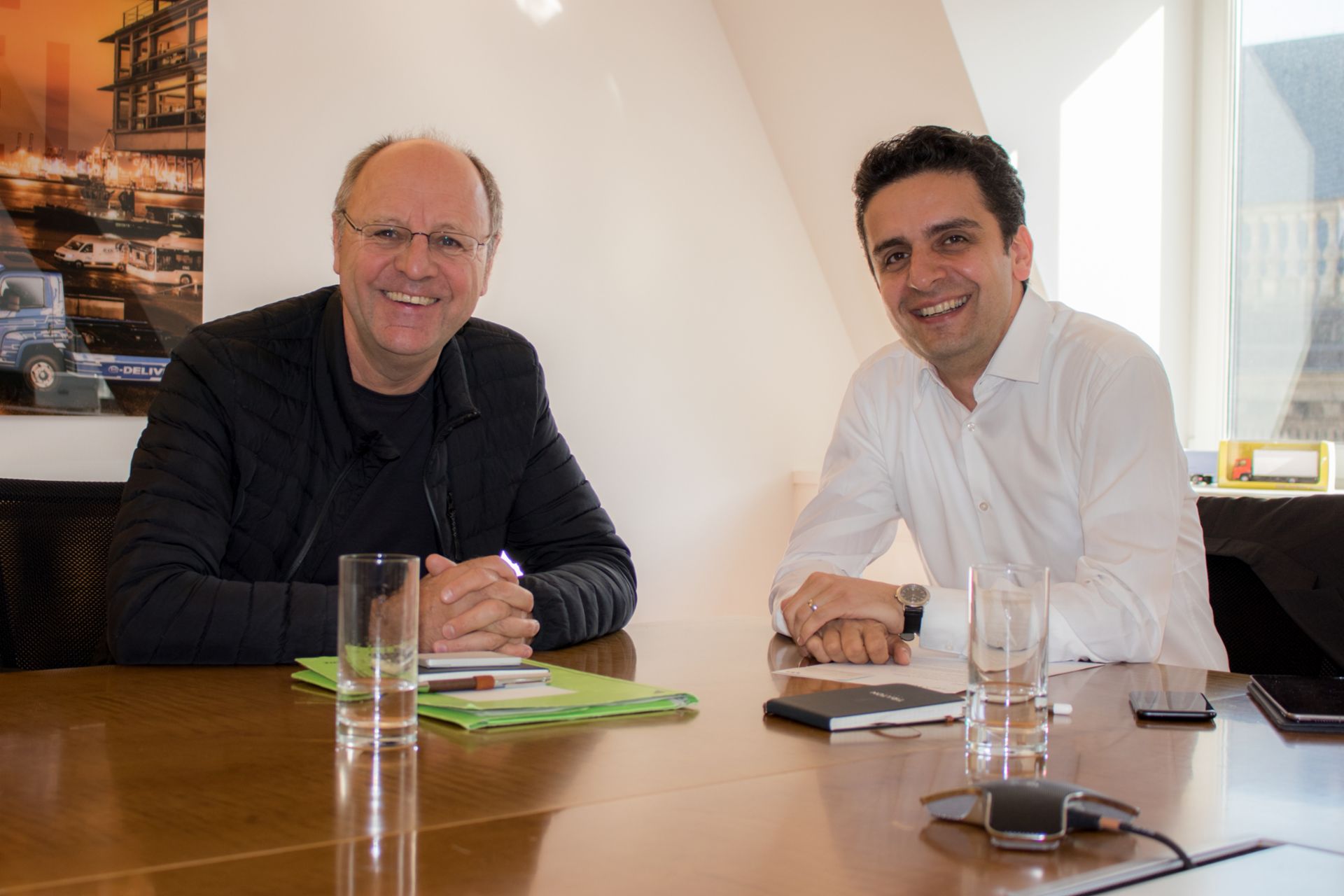
8:30 in the morning—an early start in one of the offices in the Berlin government district. A meeting of two experts from industry and academia: Dr. Atif Askar, TRATON Head of Business Development, Strategy and M&A, and mobility researcher Dr. Weert Canzler. They talk about the transportation and logistics of the future, with a focus on alternative drives, automation, and digitalization. These issues will change and shape the transportation and logistics of the future for the long haul, therefore determining a company’s future success. Read on to find out more.
Prologue—the starting point
We’ve traveled in time—the year is 2030 and, once again, it’s 8:30 in the morning. We are, however, no longer in Berlin. Instead, we find ourselves 300 kilometers further west, in the Port of Hamburg. A number of containers have just arrived in a shipment and are being unloaded. The retailer, Leopold A., is already waiting for these goods in the south of Germany—in the center of Munich, to be precise. Leopold also owns several warehouses in various locations in the surrounding area of Munich, all of which are also meant to have their stock delivered. The means of transportation? A truck. It now has to drive the 800 kilometers to Munich with a maximum of 12 hours to spare. Leopold A. will basically get live updates on the status of his shipment.
Part 1: Sustainability—how will the truck drive and what will it be powered by?
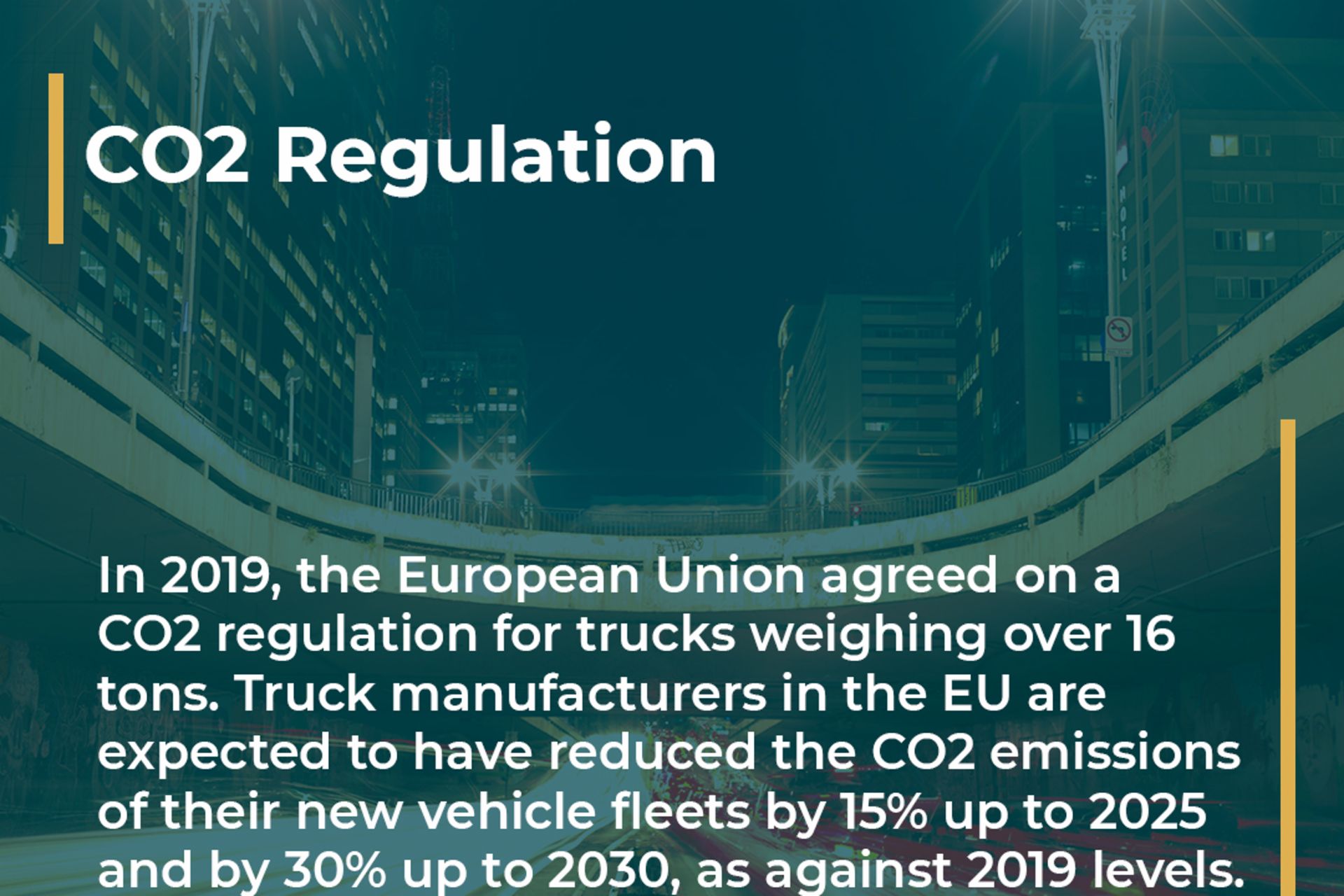
Atif Askar: If you look at this scenario, you can see the three main questions with regard to future transportation by road: firstly, how will the vehicle drive and what will it be powered by? Secondly, is the long-haul truck highly or fully automated? Or maybe even autonomous? Thirdly, how is the truck networked?
Weert Canzler: Going back to the first question: electrification is something that has to happen—to decarbonize the industry and therefore protect the climate. In other words, it’s very likely that we will see trucks powered by alternative drives on our highways as soon as in 2030. Political factors within the industry also come into play here.
Atif Askar: Good point. The European Union agreed on a CO2 regulation for trucks weighing over 16 tons at the start of 2019, laying down the guidelines. The switch to alternative drives also depends on other factors, such as the availability of refueling and charging infrastructure.
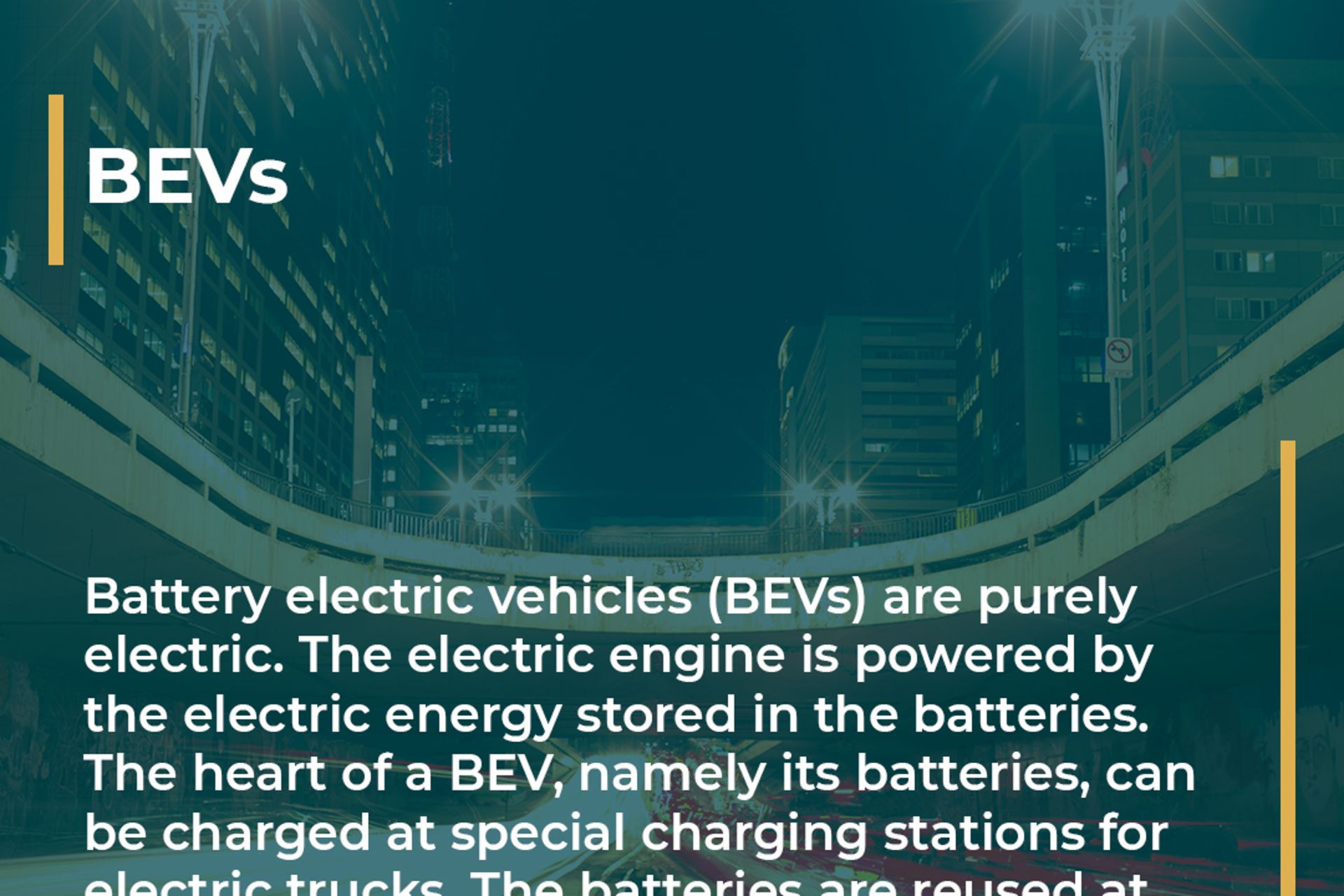
Weert Canzler: As we know, the Volkswagen Group is committed to systematic electrification. In my opinion, this is something that has to be even more protected, politically speaking. If companies know what the infrastructure will look like in 2030, they have more certainty when planning their research and development projects. What we need are clear instructions—while still leaving a bit of room to be open to technology.
Atif Askar: What do you mean by “open to technology”?
Weert Canzler: When I talk about being open to technology, I’m talking about electrification and being open to both battery electric vehicles (abbreviated to BEVs) and trucks powered by fuel cells based on hydrogen technology.
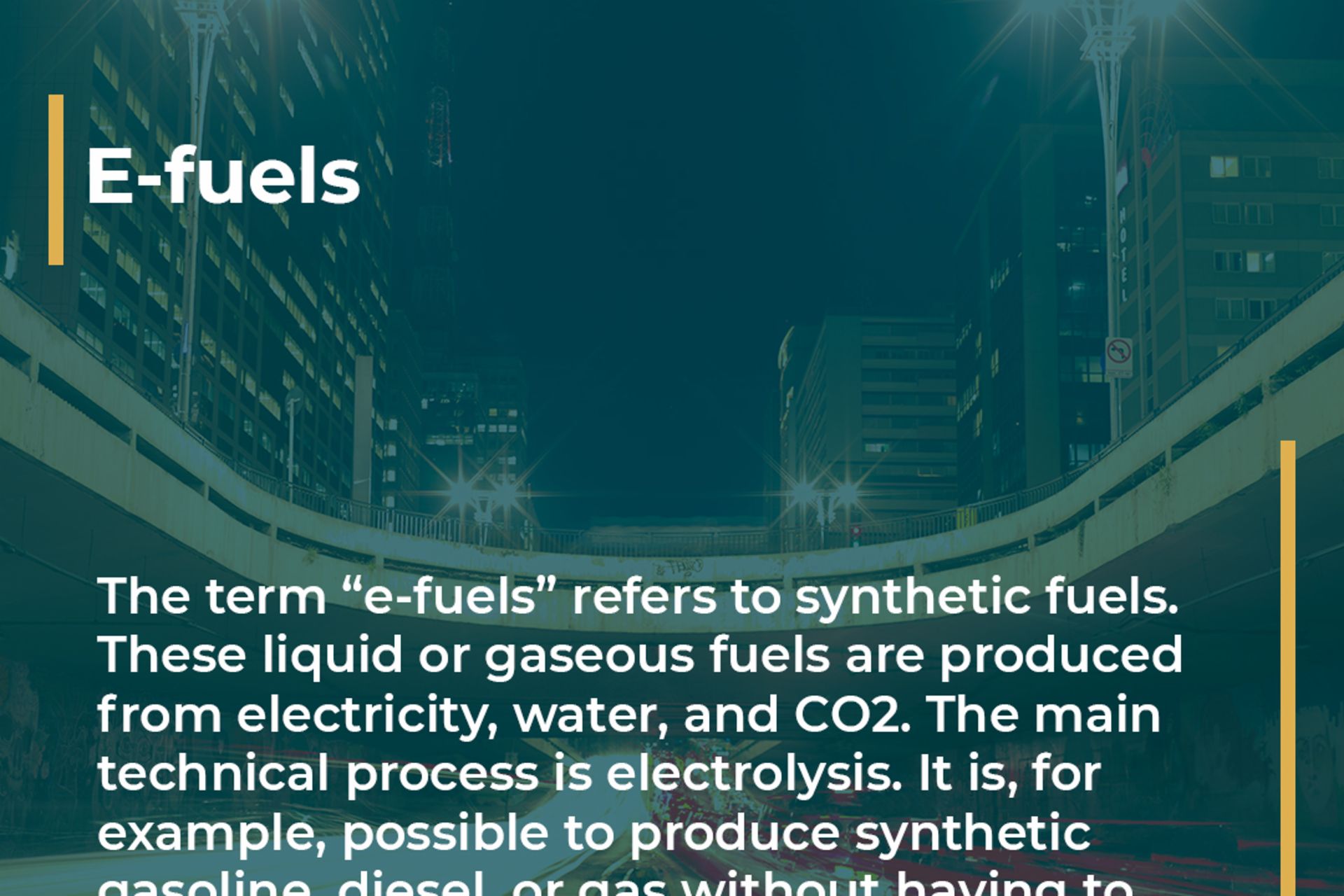
Atif Askar: There’s currently a lot of public debate around which of these two technologies is the right solution. Do you consider e-fuels (or synthetic fuels) to be another feasible alternative?
Weert Canzler: E-fuels are not likely to play a major part in long-haul transportation by road. Instead, these are needed to decarbonize the aviation industry. With this in mind, the main question is what will come out on top: BEVs or vehicles powered by fuel cells?
Atif Askar: And out of these two concepts—what would you lean toward? Will the truck speeding down the highway in our scenario in 2030 be powered by battery electric drives or fuel cells?
Weert Canzler: My guess is that the fuel cell will come out on top. Even though refueling the vehicle is a challenge, hydrogen is considerably higher in energy than any type of battery technology.
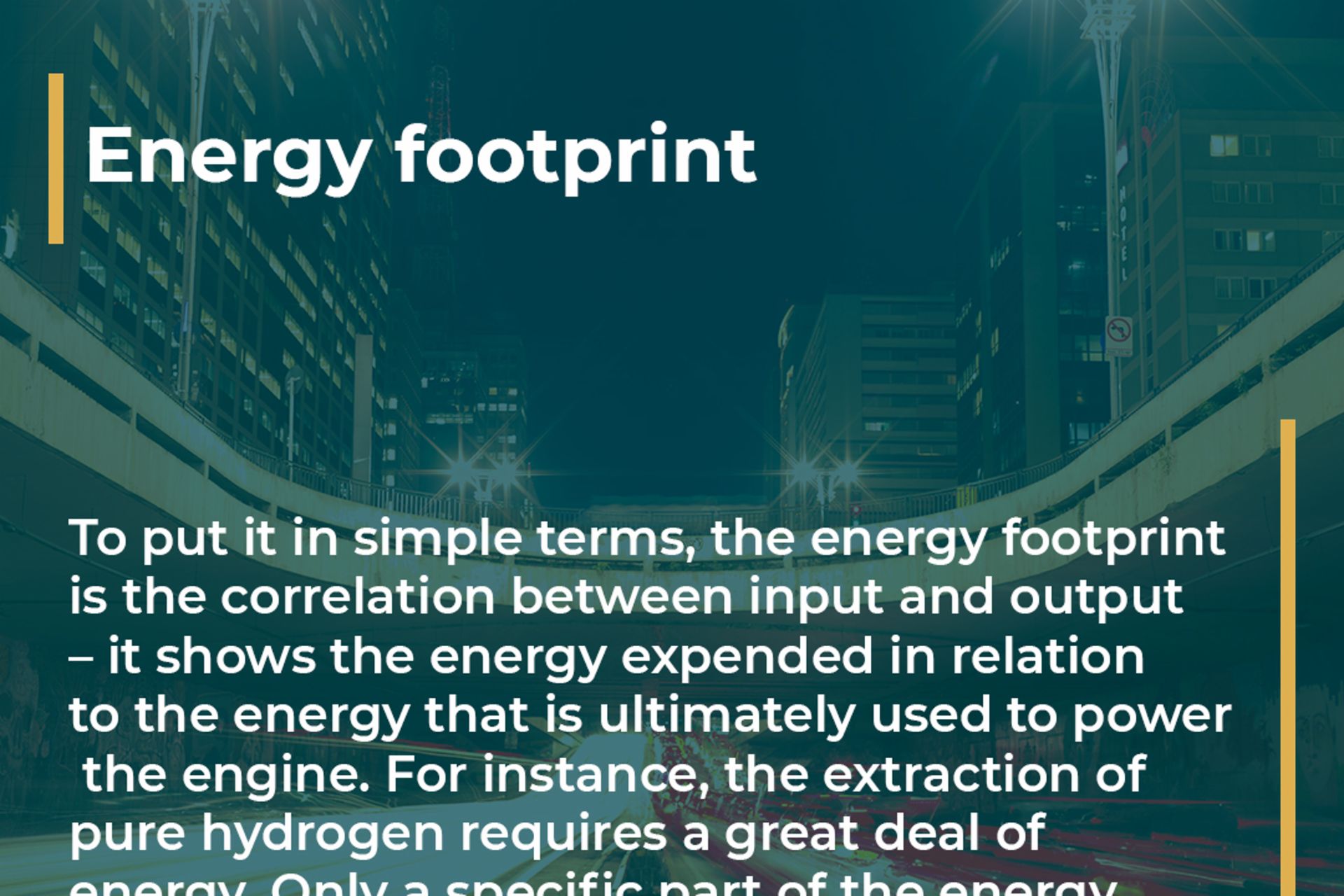
Atif Askar: That’s true. But there are also solid arguments in favor of BEVs: battery costs have become increasingly lower over the last few years, with battery electric vehicles also having a better energy footprint. This is where fuel cells are at a significant disadvantage: for every kilowatt-hour you need to charge them, you get 0.2 kilowatt-hours in return. That number is 0.8 in the case of batteries.
Weert Canzler: Having said that, we would basically have energy plants at our front door in the Port of Hamburg. This would mean that the hydrogen electrolysis could be performed fairly easily using surplus wind energy—making the energy footprint argument redundant.
Atif Askar: That would be the sort of situation where energy is basically free. But what do you do later, when you’re driving back from Munich, where there isn’t as much surplus energy from wind power? Or why can’t you take the available energy and feed it into the grid for charging a battery electric truck?
Weert Canzler: That would also be conceivable in our thought experiment. As soon as there is enough surplus energy or if hydrogen is already available, fuel cells have a fighting chance.
Atif Askar: That’s how I see it as well. Hydrogen will come into its own in the case of trucks transporting heavy freight on long routes and, if possible, driving autonomously. This shows that, as is often the case in our industry, there is not just ONE answer. The best answer varies depending on the area of application—and is contingent upon infrastructure and aspects like markets, product innovation, and customer needs.
Weert Canzler: What influences a customer’s decision to make a purchase?
Atif Askar: In this scenario, our customer is the shipping company that owns the truck, not Leopold A. The truth of the matter is that the shipping company expects to make a profit. No one drives an electric truck just because it looks good. A decision to purchase a vehicle comes down to numbers. Government incentives are also needed in this respect.
Weert Canzler: … as well as products that are efficient and zero-emission at the same time. Never before in the history of technology has such a key part in product development been played by decarbonization—with the latter having a direct impact on the company’s success. It’s also fairly clear that in order for electrification to succeed, we need a change in the mindset of all players in the transportation and logistics sector.
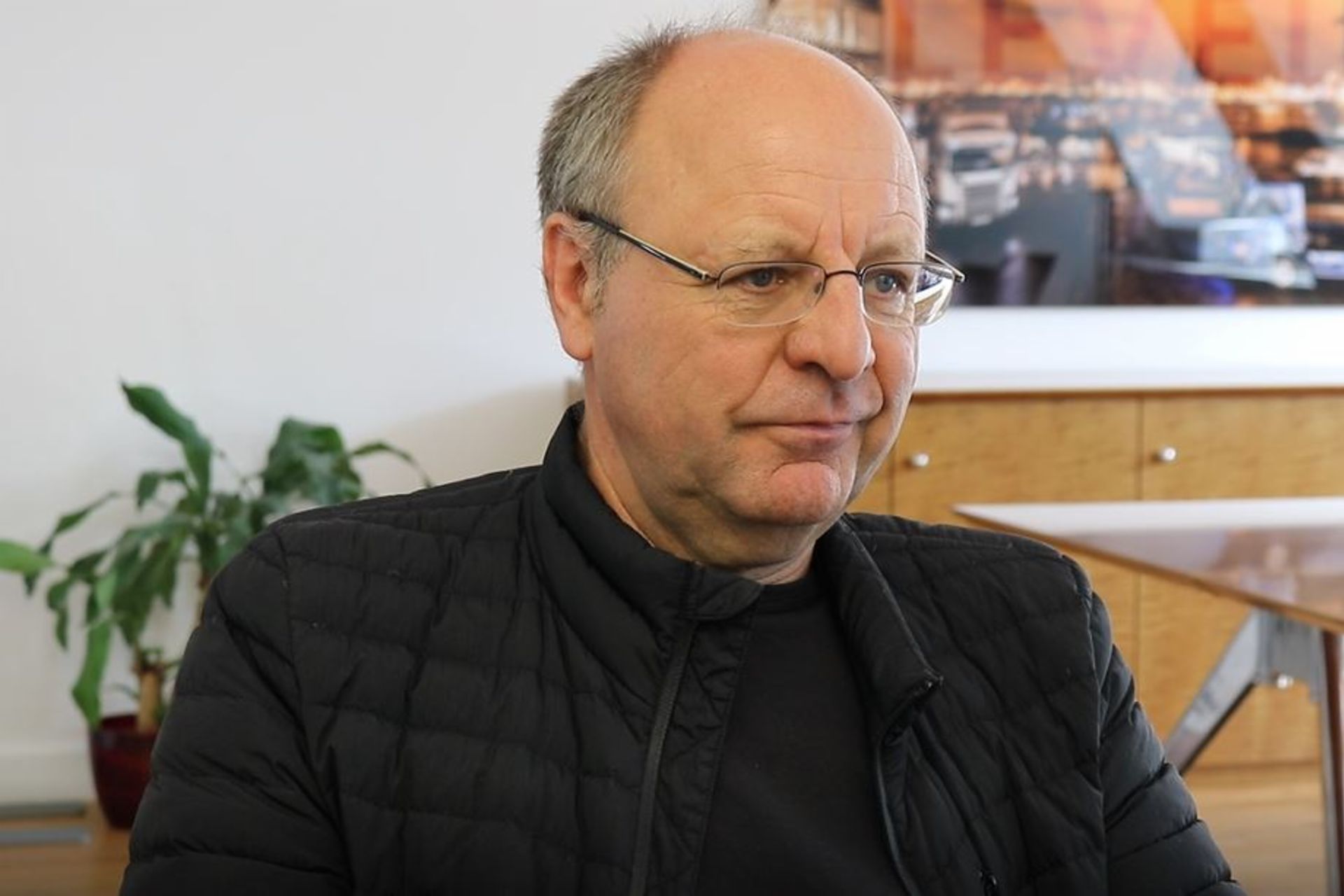
Part 2: Automated driving—a truck driving on long routes: automation or autonomy?
Atif Askar: Let us now turn to another issue of the future: automation. Do you think that Europe is quick enough to create the legal framework required for automated driving?
Weert Canzler: It’s not looking like it at the moment. This is due to Europe’s innovation culture, which is different from that in the US, for example. The first thing Europeans tend to do is anticipate all risks—in other words, what could go wrong. This does, of course, offer the advantage of certain mistakes not being made. The downside is that processes simply take too long.
Atif Askar: However, as a company, we have to keep up with our international competitors. If we want to see a fully automatic or even autonomous truck drive to Munich in a not-too-distant future, we have to test-drive it for millions of kilometers beforehand. Having said that, there is only so much we can test on private property. The enormous investments are only worthwhile if we can find a way to apply the technology on a broader scale.
Weert Canzler: This will give rise to legal debates with policymakers. Approval procedures for driving on public roads are particularly complicated, which is why we urgently need an escape clause.
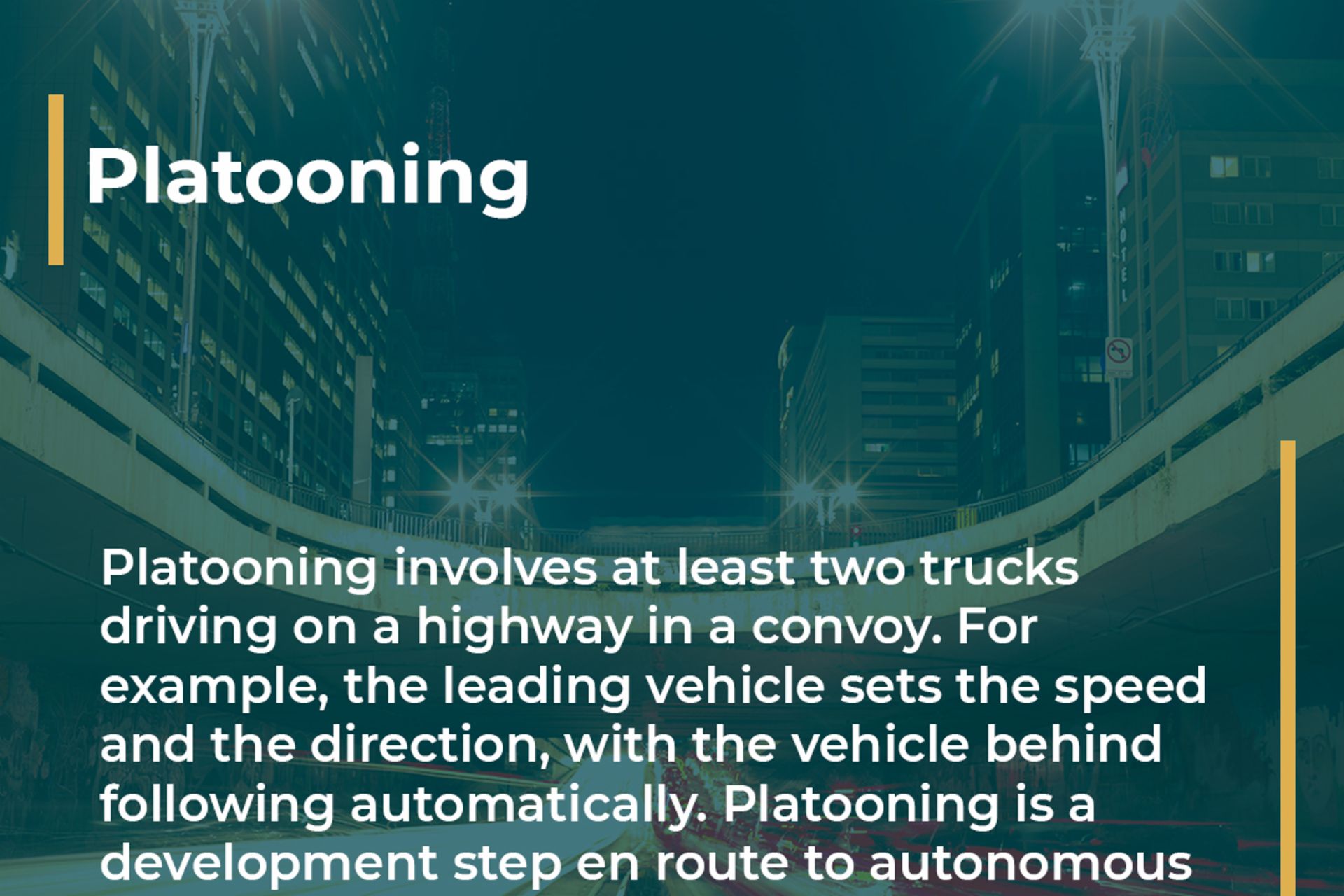
Atif Askar: What are the possibilities in the field of autonomous driving? Look at Australia, for example—where Scania is already deploying a fully autonomous vehicle in a mine. It picks up its freight and travels along a standardized route. Surely that would also be feasible for the 2030 scenario. It’s already possible to have Leopold A.’s freight brought off the container ship to the truck waiting to take it further, completely autonomously.
Weert Canzler: Yes, this may well be possible for this area of application—also because things are easier on private property from a legal standpoint. However, fully autonomous vehicles are unlikely to become reality on public roads by 2030—it will take considerably longer than that. The complexity, especially in urban areas, is simply enormous. Platooning, or vehicles driving on highways in a convoy, is a different story.
Atif Askar: We consider platooning to be a development step on the journey toward autonomous driving. It could be possible for the truck to take a separate lane to Munich in 2030. This would also make life easier from a legal point of view. Once you have minimized the risk or there is no more mixed traffic, the scenario stops being a pipe dream.
Weert Canzler: What role does the driver play in the future scenario?
Atif Askar: A really key one. One thing is already becoming clear: being a truck driver is losing its appeal. There is already a massive shortage of drivers in Europe. Give it 15 to 20 years, and we might not be able to transport certain goods any longer because the drivers are not there. Automated driving or platooning take the pressure off the drivers and may help to make this profession more desirable again.
Weert Canzler: Now, we have spoken a lot about highway transportation. But what happens once the truck approaches the inner-city area? Automation aside, my guess is that it won’t be so easy to just drive a large vehicle into the city center.
Atif Askar: Having said that, new drive technologies such as electric trucks do also open up new possibilities. They produce no emissions locally and, most importantly, they are quiet. That way, supermarkets in residential areas can also be restocked at night—without disturbing the residents’ sleep.
Weert Canzler: That would be a noticeable improvement on the current situation. However, it’s already apparent that public space is becoming more and more important for people living in European cities. It’s being taken back and redistributed—to create parking lots, playgrounds, or cycle lanes. And this trend is set to continue.
Atif Askar: Taking back the urban space, as you describe it, is an exciting development. Our scenario raises the question of how Leopold A.’s goods can be transported to their destination. This is where so-called hubs could come in, for instance those on the outskirts.
Weert Canzler: The trend is moving toward smaller units and decentralized usage, especially in urban areas that are also residential. Leopold A.’s goods are transported on the highway to the hubs, where they are reloaded. The fine distribution would take place using other vehicles, say a small truck or a delivery bike, depending on the distance—both of them electric, of course.
Atif Askar: Needless to say, we also discuss the issue of last-mile distribution. The main question is what happens once the goods arrive at a hub: are they split between three smaller vehicles or is one large vehicle used instead?
Weert Canzler: We should be prepared for different scenarios, all of which also involve restructuring the transportation chain. It is becoming increasingly more important to think holistically.

Part 3: Connectivity—how is the truck digitally connected?
Atif Askar: And digitalization is the fundamental component of a holistic solution. The potential of digitalization is underestimated compared with that of electrification and automation.
Weert Canzler: Indeed, an end-to-end approach allows us to leverage a great deal of efficiency along the entire digital value creation chain.
Atif Askar: This is exactly what we are working on. What do we have at the moment? Lots of trucks making empty runs or driving only partially loaded—simply because shipping companies do not have the information to be able to drive more efficiently, for instance to where additional cargo is waiting. Having said that, we’re already in a position to make transportation processes more sustainable by collecting and processing information digitally.
Weert Canzler: You make a good point—namely that efficiency and sustainability go hand in hand. Having fewer trucks on the roads because they are utilized better, goods being transported more efficiently—all of this creates a huge impact.
Atif Askar: Digital platforms and systems provide basic information such as vehicle data and make recommendations for action possible. This can be used to considerably improve the transportation process or truck availability with the help of targeted recommendations on whether a truck requires maintenance. It is something we have to work on harder if we want to actually see the truck in our 2030 scenario completely networked, and therefore more efficient. Leopold A. could use the app to track his goods. The shipping company, the truck driver—they can also keep an eye on all the data.
Weert Canzler: Like I said, a company’s success will come down to whether it is able to offer comprehensive solutions to its customers. This means that companies will no longer be able to go it alone in many areas.
Atif Askar: Expanding the value creation chain in this respect is a step in the right direction. These days, customers buying a truck are also buying an all-inclusive, no-worry package and after-sales service—if they want to. In the future, this could also include a charging solution or the total electricity used over the life cycle of electric vehicles. For passenger cars, this is the eBox in the garage. Trucks or buses would have a slightly bigger box—basically a charging solution in the depot.
Weert Canzler: That could be part of the overall package being offered to the customers. Electricity—charging stations, and so on and so forth … All of them networked. It’s an interesting approach.
Atif Askar: Partnerships are vital in this respect. If we believe that we can do everything on our own, we run the risk of becoming too expensive or slow. This is something we have to bear in mind in all digitalization, electrification, and automation endeavors.
Epilogue
What do these answers mean for the 2030 scenario? Above all, they make it clear that there are various scenarios, not just one solution. One of those is the following: in 2030, Leopold A.’s goods are unloaded from the ship in the Port of Hamburg before being transported by a fully autonomous vehicle to the truck, where they are reloaded. After this, the battery electric truck, either fully automatic or even autonomous, carries the goods by road to a hub on the outskirts of Munich. Electric distribution trucks are then used for the fine distribution of the goods to our retailer. Naturally, all vehicles within the supply chain in 2030 are networked. Leopold A. always knows where his goods are, and the operator has the option to access all vehicle data at any time. Leopold A. is happy, and so is the shipping company. That would be one way to come up with a transportation chain that takes sustainability, connectivity, and automated driving into account. What does the future hold for transportation? One thing is certain: TRATON will play a part in shaping that future. Transforming Transportation.
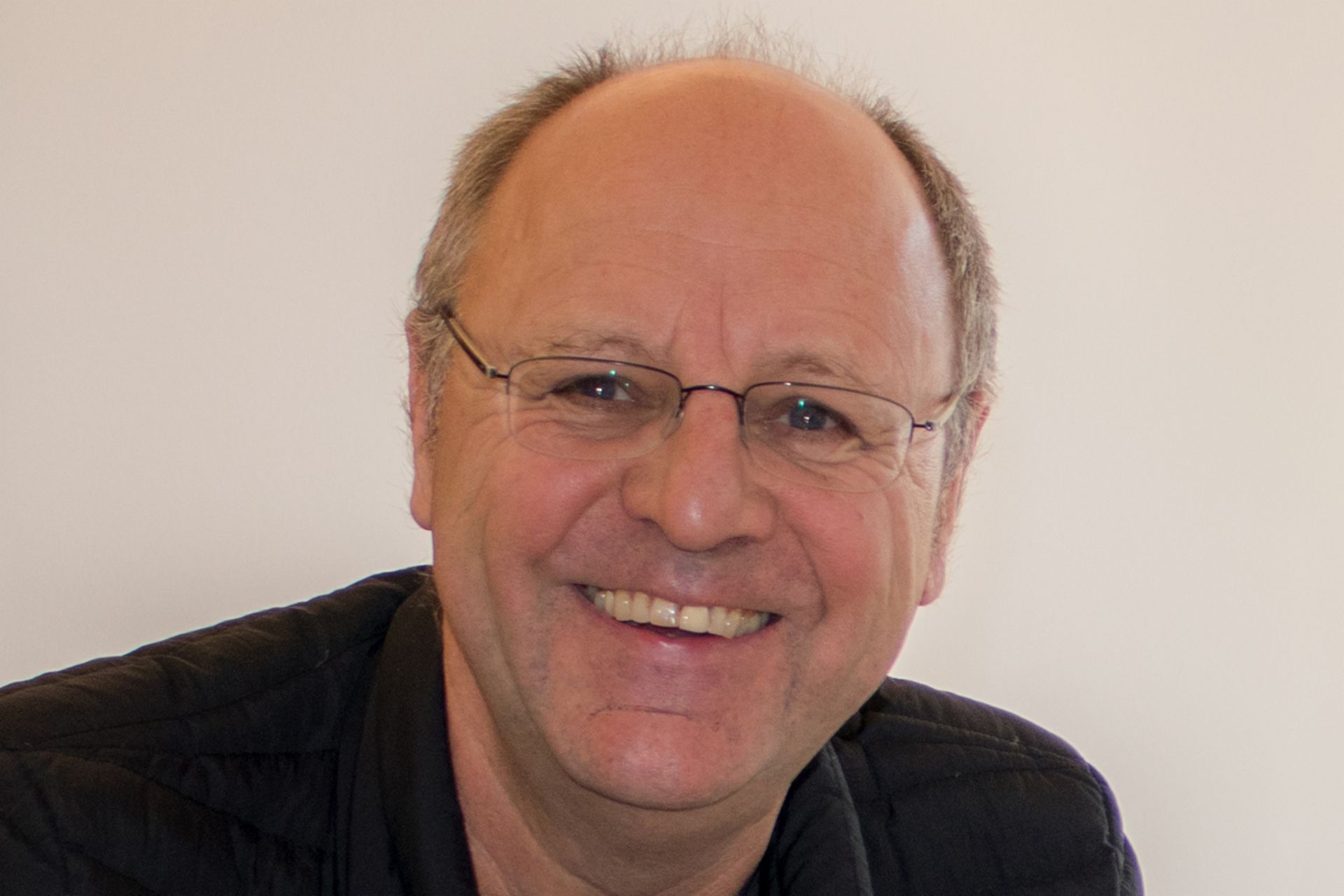
“As mobility researchers, we operate closer to the ground than, say, future researchers—in other words, we pay more attention to the technical details,” explains Dr. Weert Canzler (59). Canzler, who has a PhD in social sciences, is a mobility researcher at the WZB Berlin Social Services Center. He is the author of numerous scientific publications.
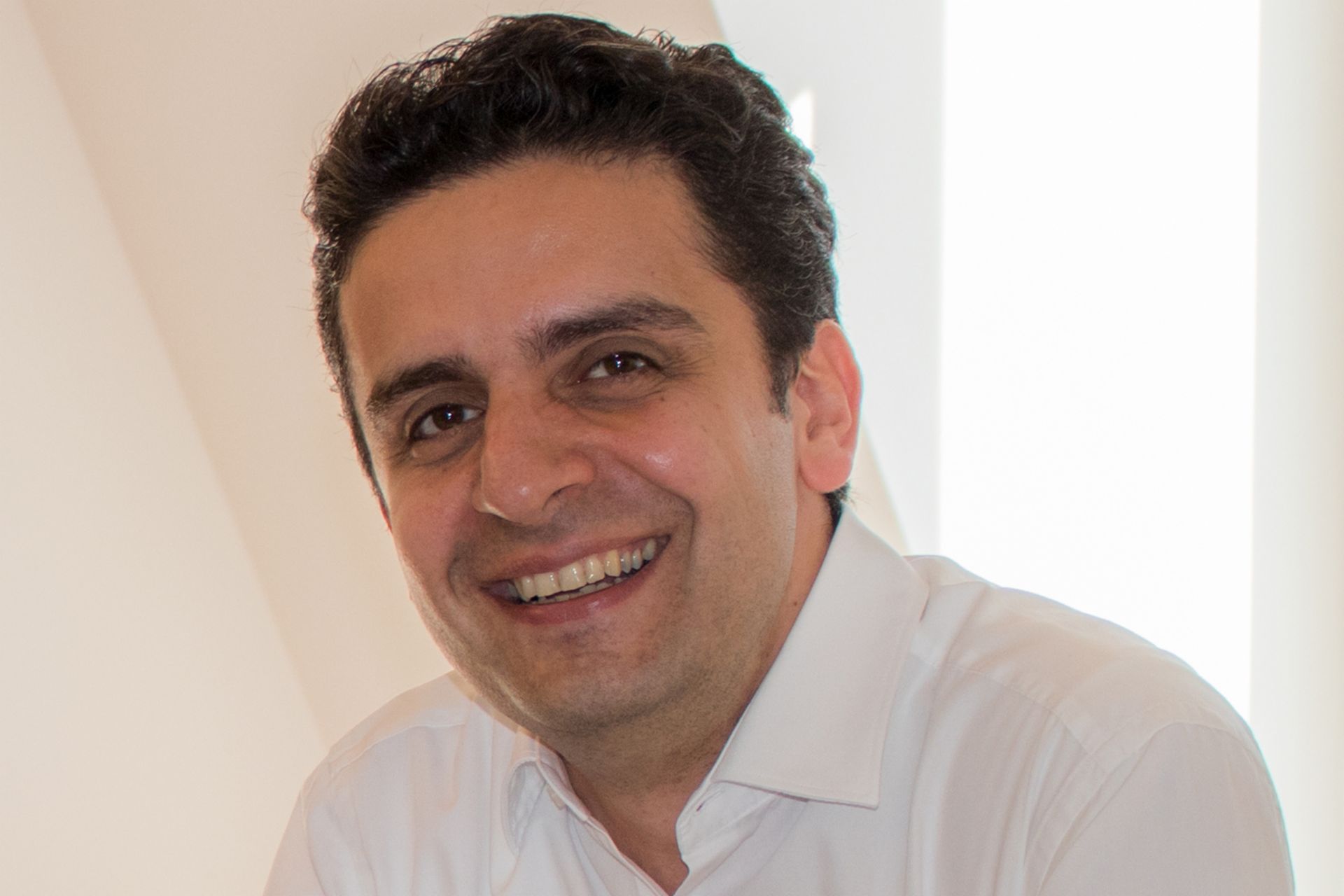
“As an industrial player, our aim must be to use innovation to improve sustainability—both sustainability in the environmental sense of the word and the sustainability of our customers’ business with the help of efficient transportation solutions,” says Atif Askar (42). Askar has a PhD in economics and has been with the TRATON GROUP since 2014, responsible for the Business Development, Strategy and M&A functions.